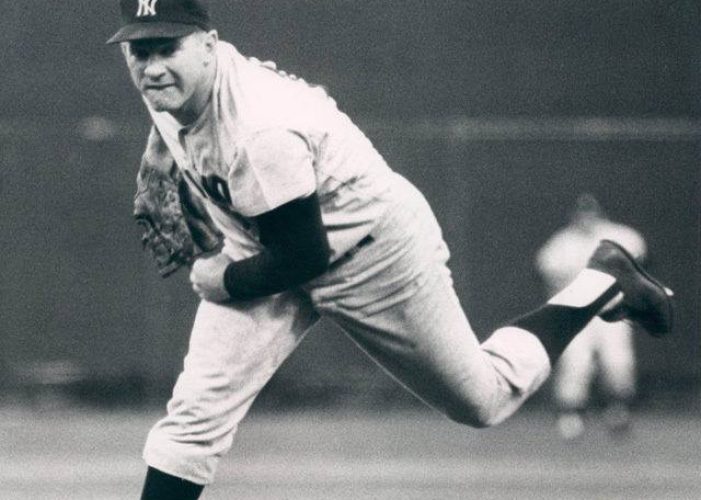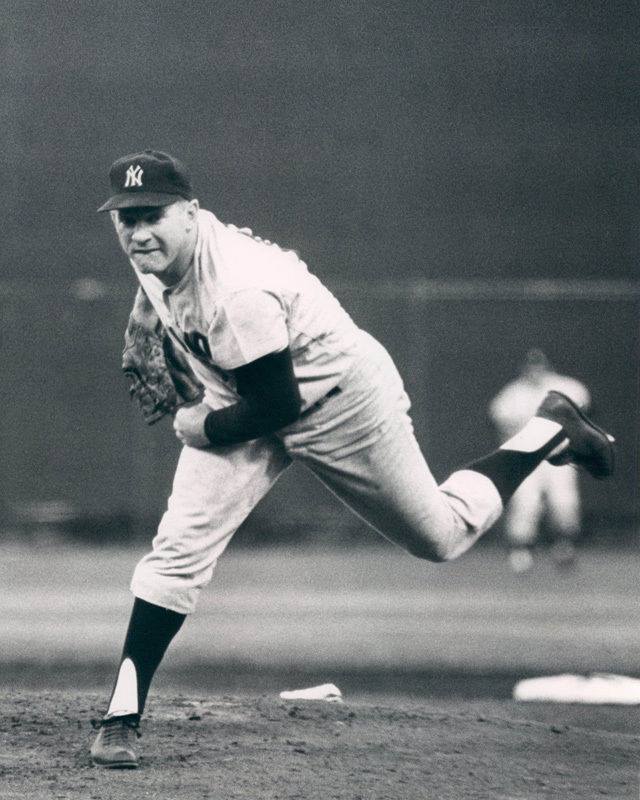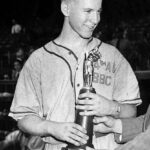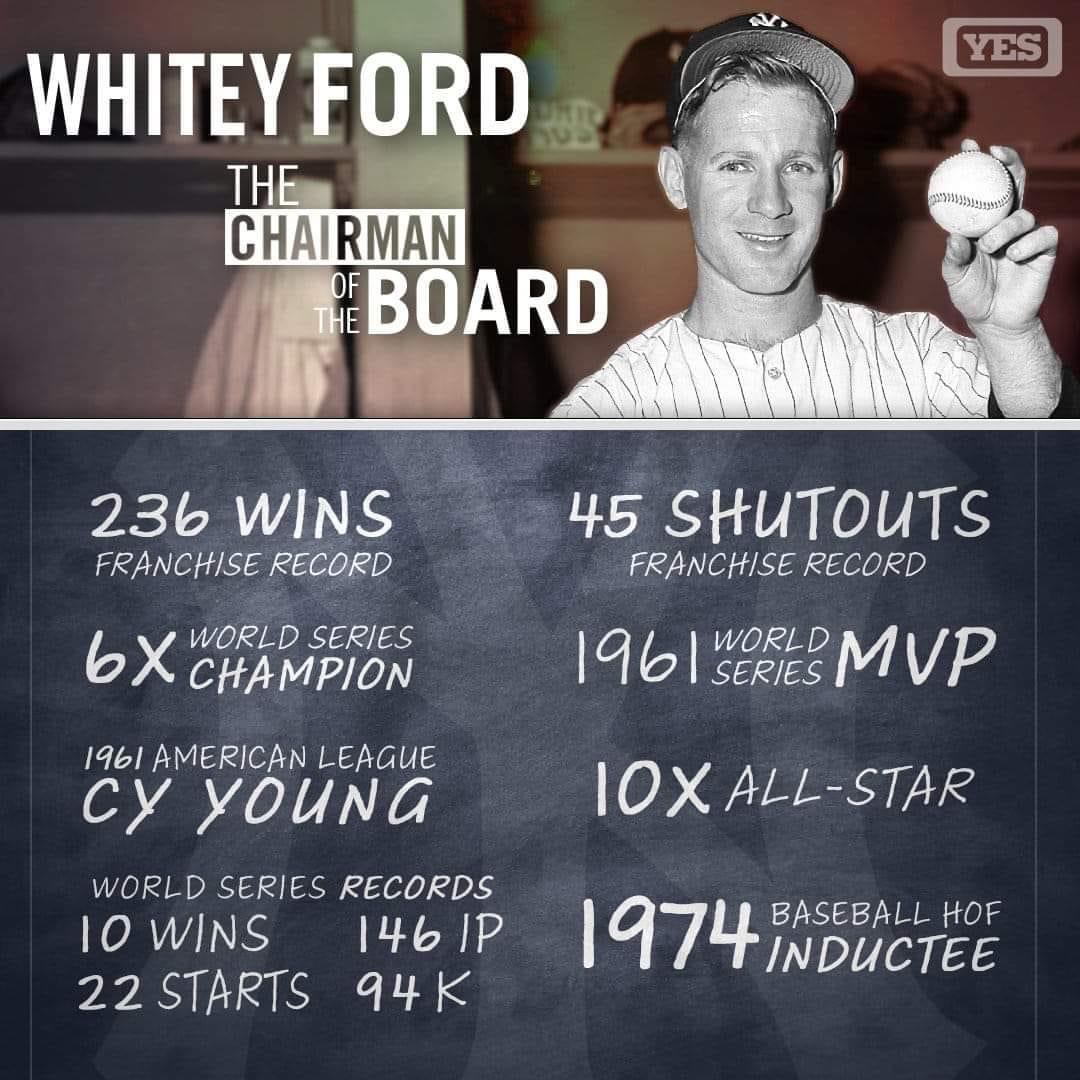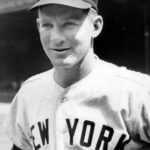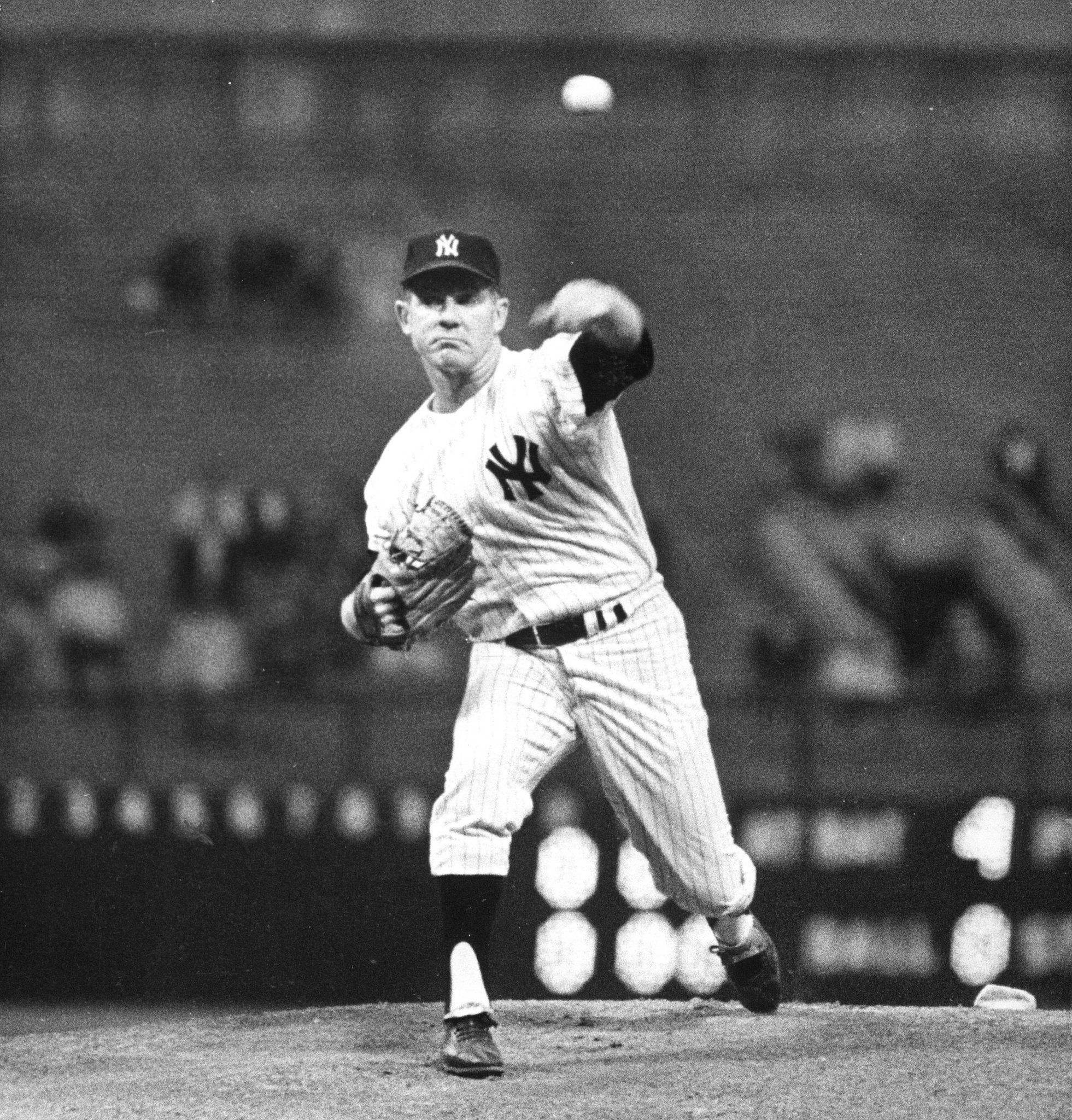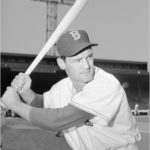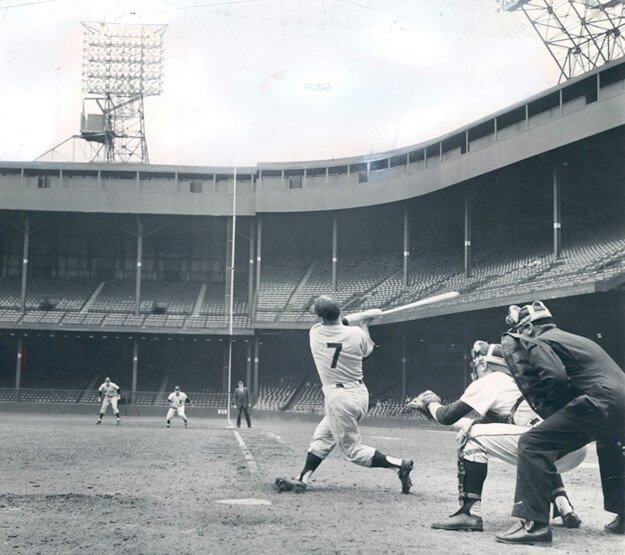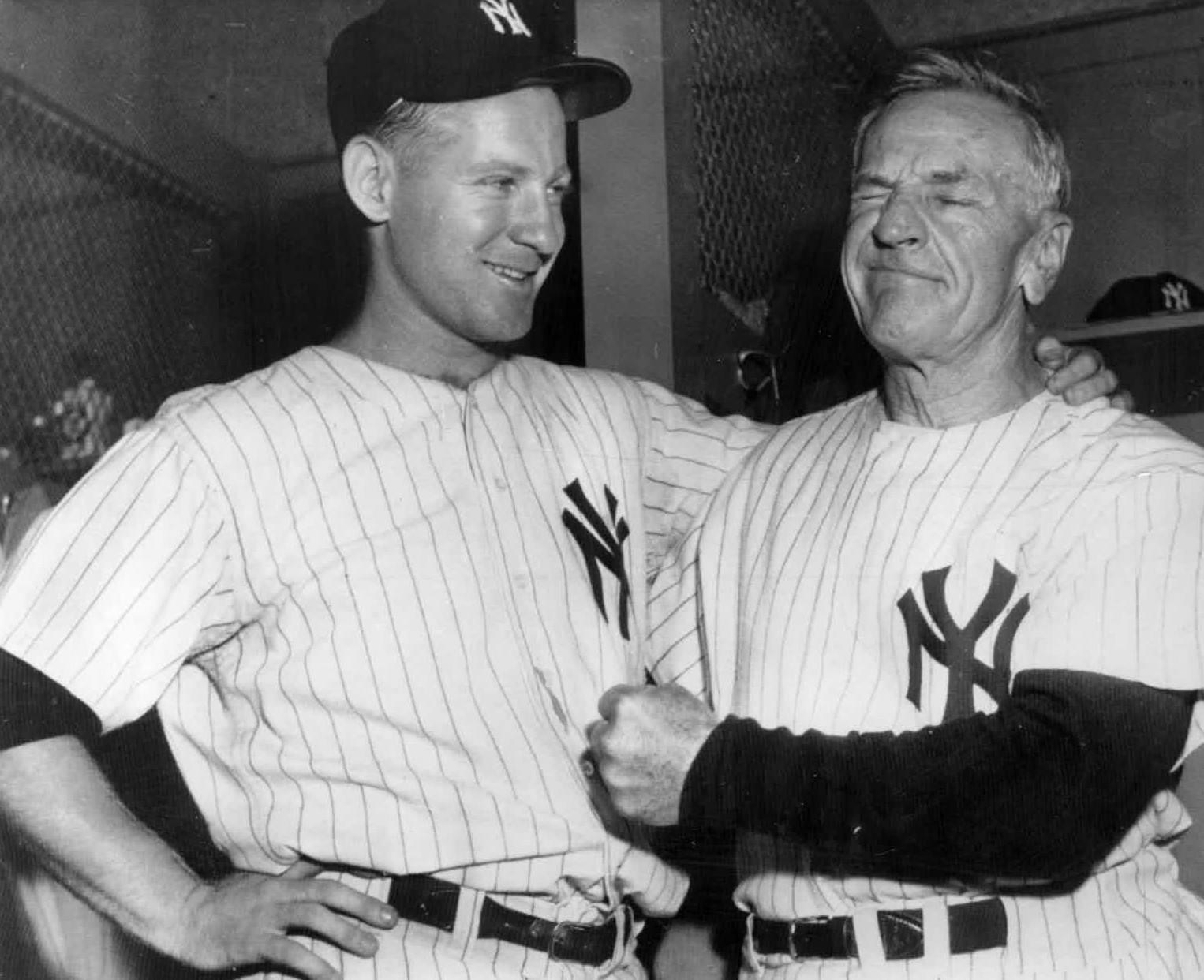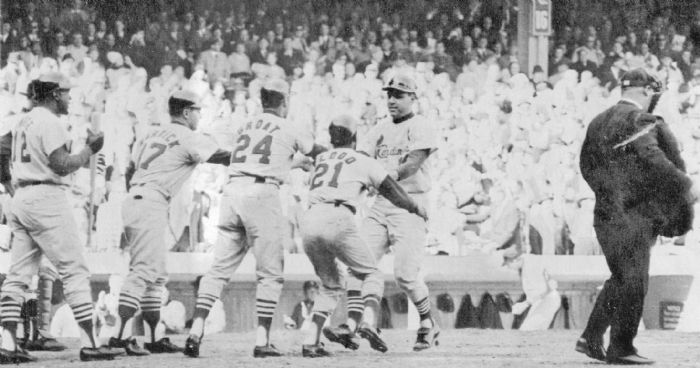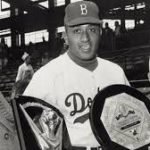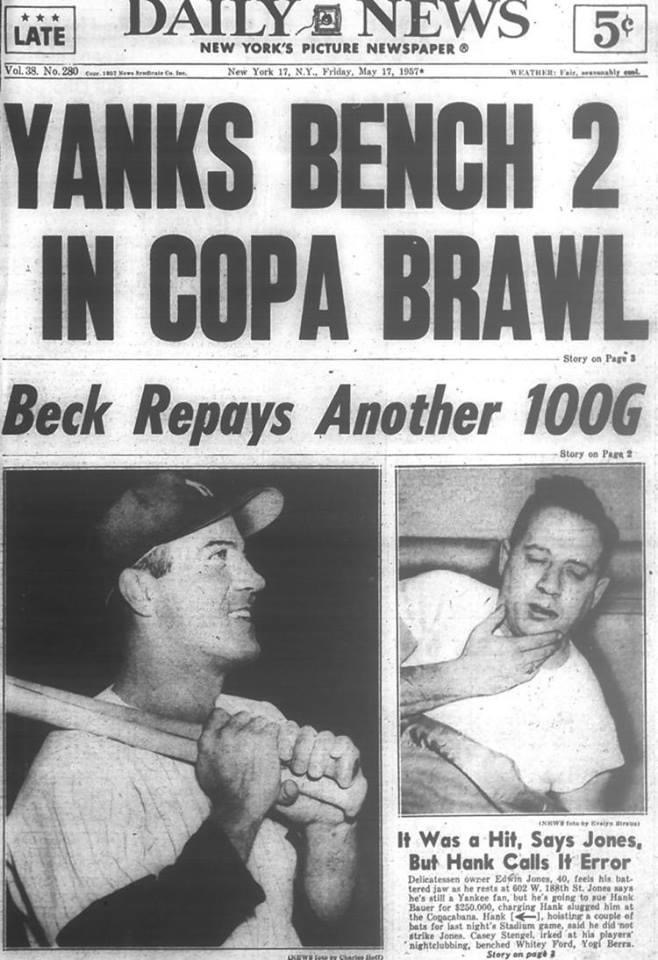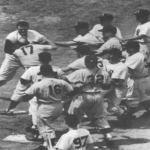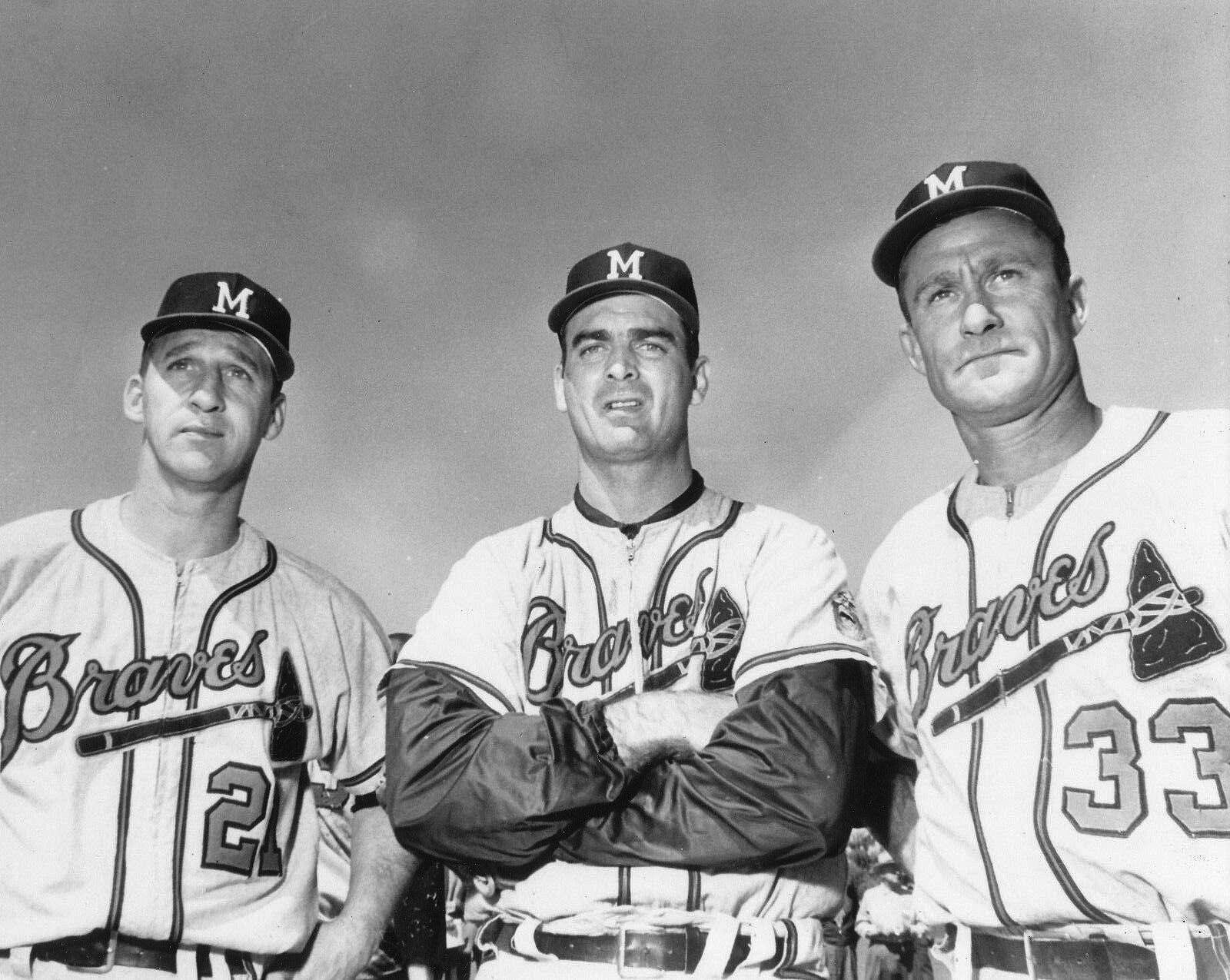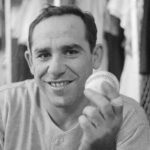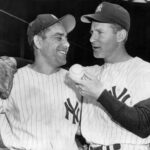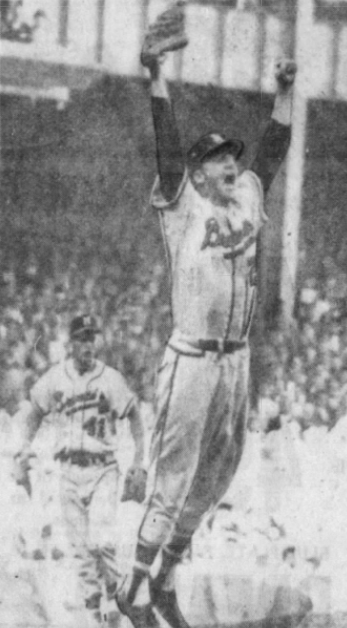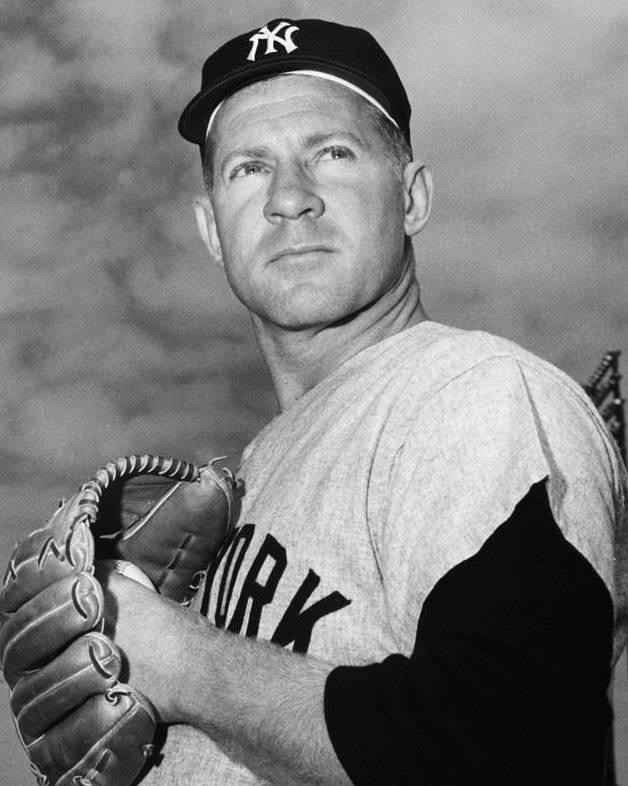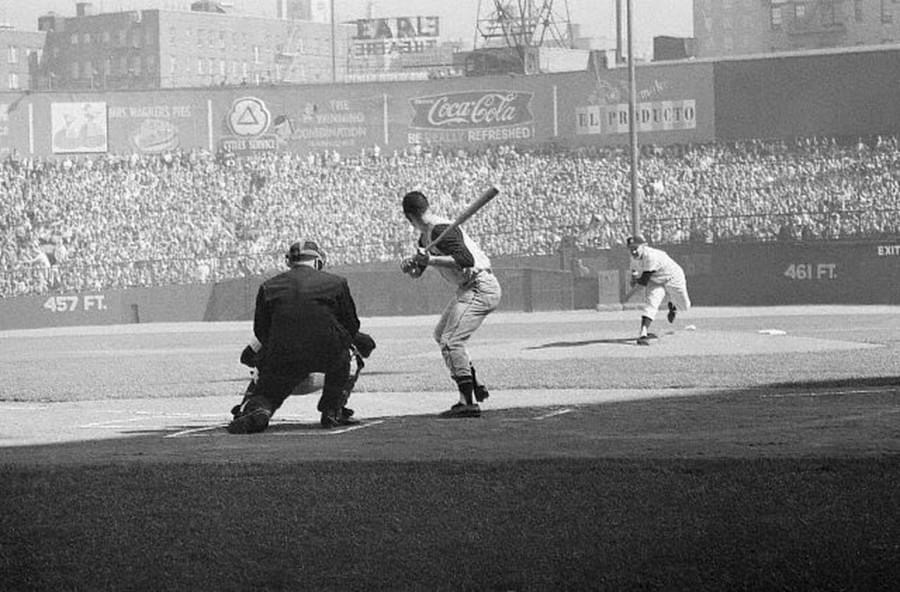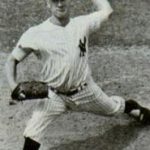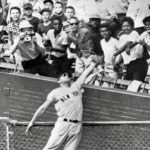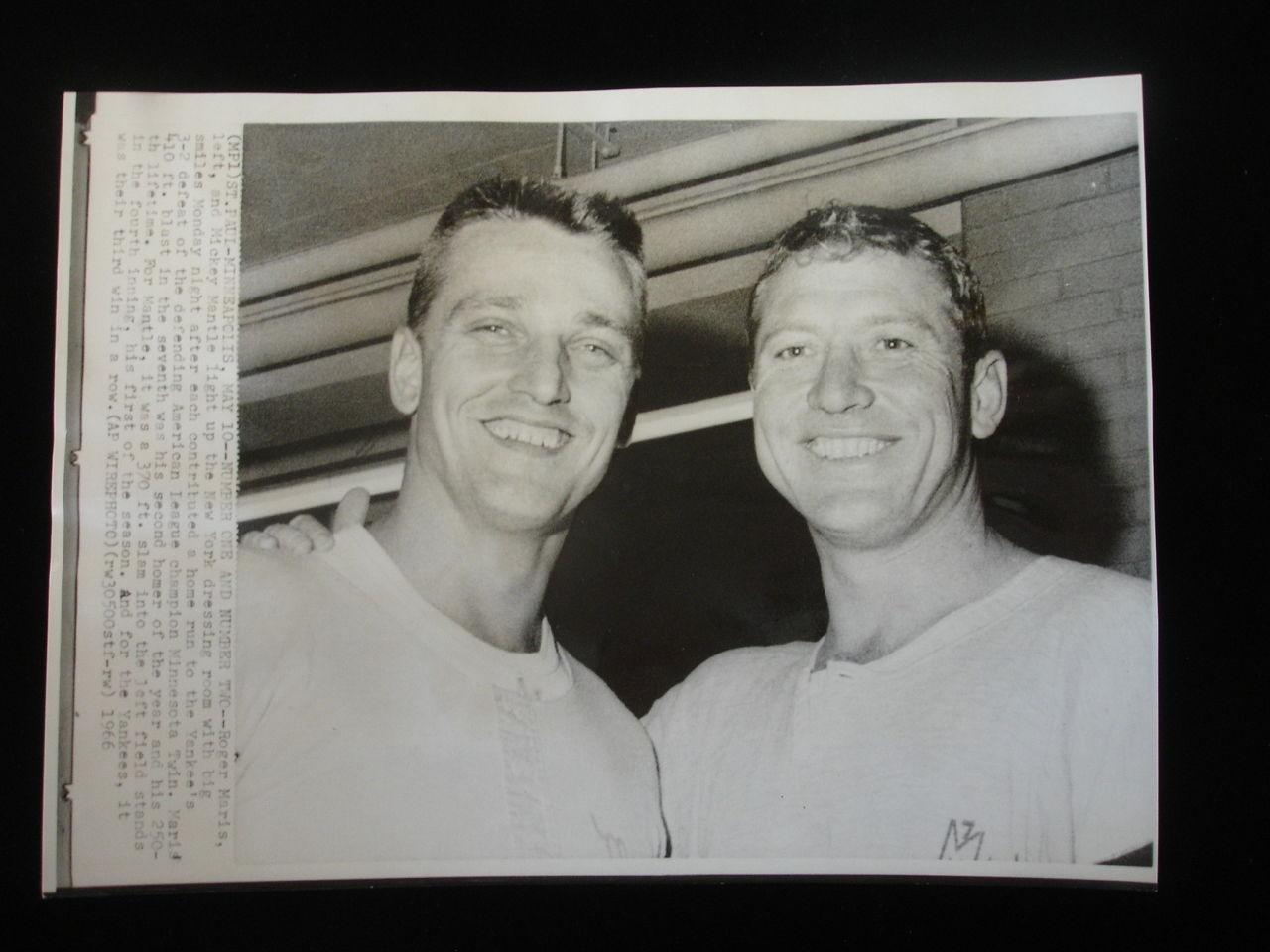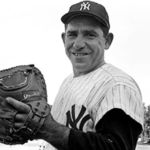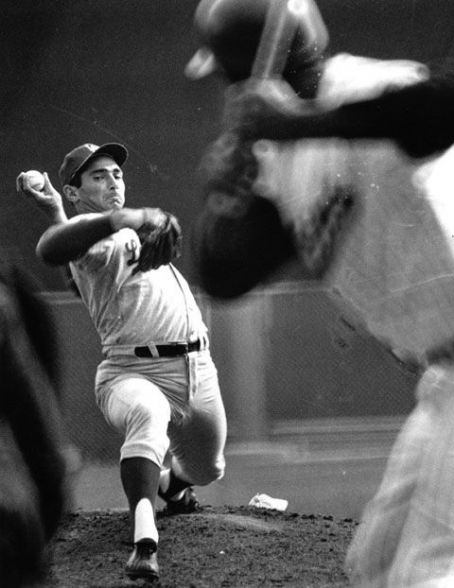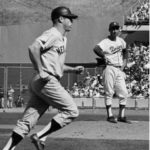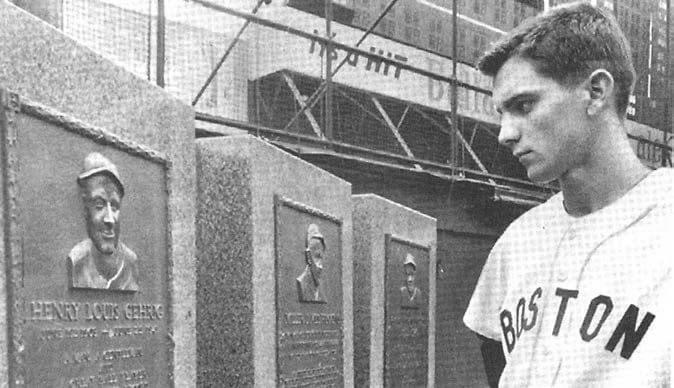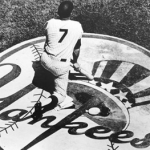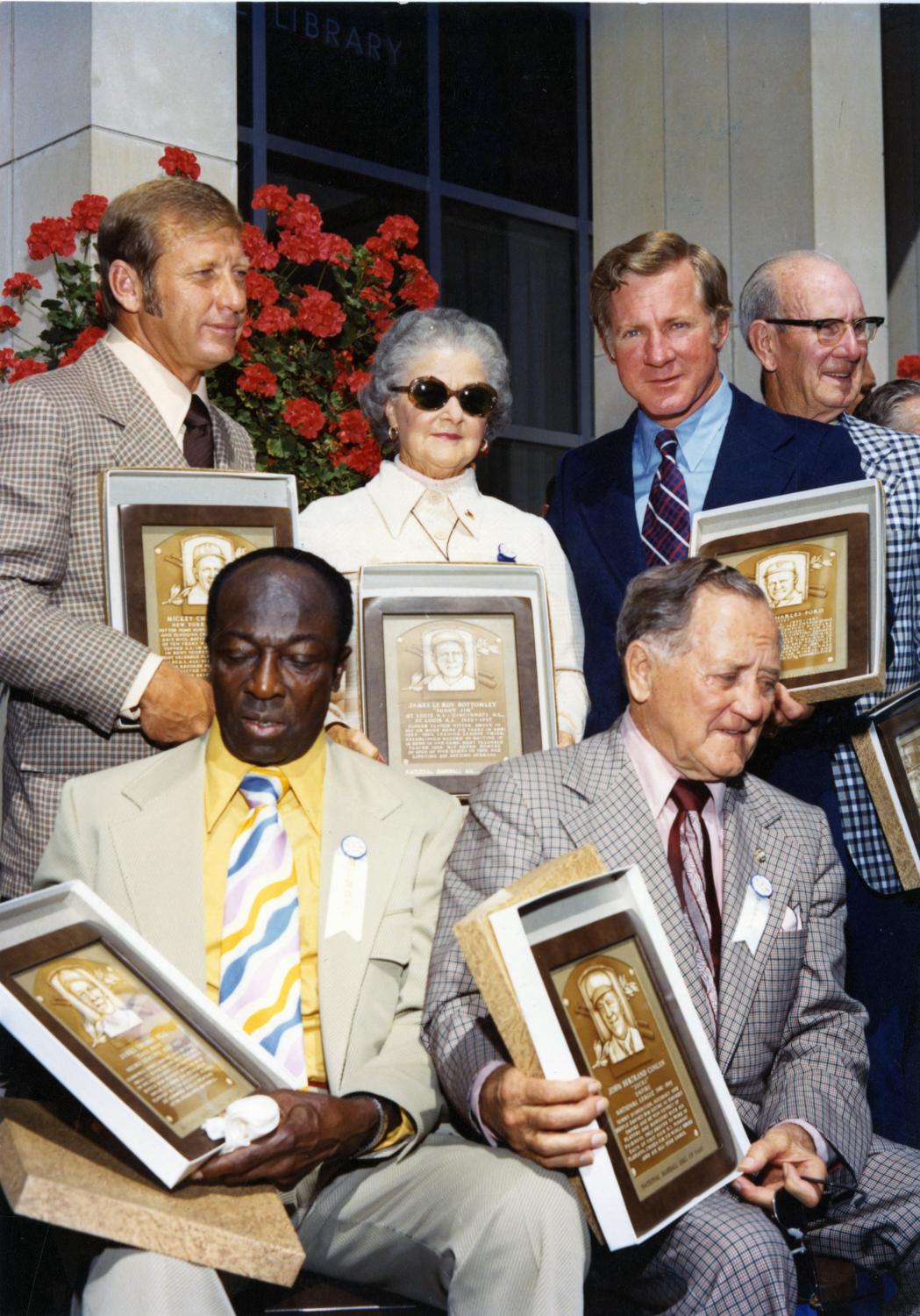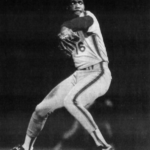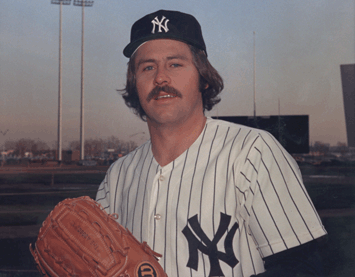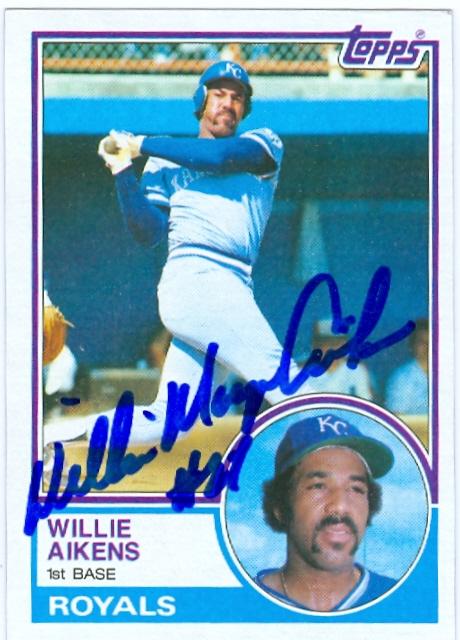Whitey Ford Career Highlights
Position: Pitcher
Bats: Left • Throws: Left
5-10, 178lb (178cm, 80kg)
Born: October 21, 1928 in New York, NY
Died: October 8, 2020 in Lake Success, NY
Buried: Locust Valley Cemetery, Locust Valley, NY
High School: Aviation Tech HS (New York, NY)
Debut: July 1, 1950 (8,294th in MLB history)
vs. BOS 4.2 IP, 7 H, 3 SO, 6 BB, 5 ER
Last Game: May 21, 1967
vs. DET 1.0 IP, 1 H, 0 SO, 1 BB, 1 ER, L
Hall of Fame: Inducted as Player in 1974. (Voted by BBWAA on 284/365 ballots)
View Whitey Ford’s Page at the Baseball Hall of Fame (plaque, photos, videos).
Full Name: Edward Charles Ford
Whitey Ford Baseball-Reference Page
Nicknames: The Chairman of the Board or Slick
View Player Bio from the SABR BioProject
Nine Players Who Debuted in 1950
Joe Adcock
Gus Bell
Jimmy Piersall
Jackie Jensen
Jim Busby
Chico Carrasquel
Billy Martin
Lew Burdette
Whitey Ford
Whitey Ford Career Highlights
Biography
“If the World Series was on the line and I could pick one pitcher to pitch the game, I’d choose Whitey Ford every time.” – Mickey Mantle
Generally considered to be the greatest starting pitcher in the history of the New York Yankees, Whitey Ford was among the premier hurlers of his time. A fierce competitor and a master of the mental aspects of pitching, Ford won more games (236), threw more shutouts (45), struck out more batters (1,956), and pitched more innings (3,171) than any other Yankee hurler, while also establishing World Series records for most wins (10), losses (8), games started (22), innings pitched (146), and strikeouts (94). The fact that the left-handed-throwing Ford had the good fortune to spend his entire career pitching for the dominant team of his era in a ballpark that boasted distant outfield fences in left field and left-center field certainly aided his numbers considerably. Nevertheless, Ford’s overall effectiveness as a hurler is indisputable. He compiled an ERA under 3.00 in 11 of his 16 seasons, never allowing the opposition more than 3.24 runs per nine innings in any single campaign. Ford’s lifetime 2.75 earned run average is the lowest among starting pitchers whose careers began after the advent of the Live Ball Era in 1920. His career record of 236-106 gives him a lifetime winning percentage of .690 – the third best all-time, and the highest of any modern pitcher with at least 200 wins. He allowed an average of only 10.94 base runners per nine innings, and his 45 career shutouts included eight 1-0 victories. Ford accomplished all this despite possessing only average physical size and athletic ability.
Biography:
Born in New York City on October 21, 1928, Edward Charles Ford grew up in the Astoria section of Queens, just a few miles south of Yankee Stadium. After graduating from the Manhattan School of Aviation, Ford signed an amateur free agent contract with the Yankees in 1947. He began his professional baseball career shortly thereafter, being given the nickname “Whitey” while in the minor leagues due to his exceptionally blonde hair. Ford spent almost three years working his way up New York’s farm system, finally making his major league debut with the team at the age of 21, on July 1, 1950. Displaying the same craftiness and calm demeanor on the mound that eventually earned him the nickname “The Chairman of the Board,” Ford went on to compile a 9-1 record over the season’s final three months, helping the Yankees to their second of five straight American League pennants. He continued his success against the Philadelphia Phillies in the World Series, throwing 8 2/3 innings of shutout ball in the Game Four clincher.
Ford spent the 1951 and 1952 campaigns serving in the Army during the Korean War, but he returned to the Yankees in 1953 to give the team the deepest starting staff in the majors. Joining veteran hurlers Allie Reynolds, Vic Raschi, and Eddie Lopat, Ford gave New York a “Big Four” that rivaled that of the Cleveland Indians – the team that provided the Yankees their stiffest competition during the first half of the decade. The depth of New York’s starting staff enabled manager Casey Stengel to work Ford into the rotation gradually, without putting too much pressure on the youngster. Ford learned a great deal from Reynolds, Raschi, and fellow lefthander Lopat, who taught him many tricks of the trade.
After compiling marks of 18-6 and 16-8 his first two full seasons, Ford established himself as the ace of the Yankee staff in 1955. Finishing the year with a record of 18-7, he tied for the league lead in wins. Ford also topped the circuit with 18 complete games and placed second with an ERA of 2.63, en route to earning the first of four selections to The Sporting News All-Star Team. He finished out the campaign in grand fashion, throwing consecutive one-hitters during the month of September.
Ford followed up his outstanding 1955 season with another exceptional year in 1956, finishing the regular season with a record of 19-6, 18 complete games, and a league-leading 2.47 earned run average. He topped the circuit in ERA again two years later, when he compiled a career-best mark of 2.01.
Despite the tremendous amount of success Ford experienced during the first half of his career, he likely would have posted even better numbers had manager Casey Stengel not limited his starts over the course of each season. Stengel preferred to start Ford every fifth or sixth day, manipulating his rotation so that his best pitcher might face the league’s stronger teams.
Reflecting back on the manner in which Stengel handled him his first several seasons, Ford noted, “Casey and Jim Turner (former Yankee pitching coach)…there were certain clubs they wanted me to pitch against. I know I would never miss Chicago, Cleveland, or Detroit. If I had to rest an extra day, they would do it in order for me to pitch against certain clubs.”
New York’s dominance as a team also tended to limit the number of appearances Ford made each year. The Yankees won the American League pennant in 11 of his first 13 seasons with the team – much of the time by a fairly wide margin. New York’s early pennant-clinching typically enabled the front office to exert pressure on Stengel to limit the playing time of many of the team’s best players. Position players often received an inordinate amount of rest the final two or three weeks of the season, while starting pitchers frequently received as much as a week off in between starts. Doing so gave team management – notoriously cheap under then-GM George Weiss – far more negotiating power during contract negotiations. As a result, Ford typically started fewer than 30 games each year, thereby preventing him from winning as many as 20 games even once in his first nine seasons.
However, when Ralph Houk replaced Stengel as manager in 1961, he installed a regular four-man rotation, allowing Ford to pitch on only three days’ rest for the first time in his career. The lefthander ended up making 39 starts, finishing the campaign with a league-leading record of 25-4, topping the circuit with 283 innings pitched, striking out a career-high 209 batters, and winning the Cy Young Award. After winning 17 games the following year, Ford led the American League with a record of 24-7 and 269 innings pitched in 1963. He likely would have won the Cy Young Award again had the trophy been presented to the best pitcher in each league at the time. Instead, the award went to the National League’s Sandy Koufax, who posted even better numbers for the pennant-winning Dodgers. Koufax also bested Ford twice in that year’s World Series, with the latter losing the Dodgers’ Game Four clincher despite allowing only two hits and one unearned run.
The 1963 campaign turned out to be Ford’s last truly dominant season. Although he pitched extremely well the following year, compiling a record of 17-6 and a 2.13 ERA, he began experiencing circulatory problems in his pitching arm that hindered his performance the remainder of his career. Never a particularly hard thrower to begin with, Ford threw the ball with less velocity than ever, thereby forcing him to get by more on guile and courage than anything else. His inability to make more than one start in the 1964 World Series against the Cardinals eventually led to New York’s downfall, since the team found it necessary to start rookie right-hander Mel Stottlemyre in the decisive seventh game on only two days’ rest.
Despite lacking the same velocity on his pitches he had earlier in his career, Ford experienced a considerable amount of success his last few seasons as a full time starter because, even at his peak, he depended more on his intelligence and resourcefulness than on sheer physical ability to get out opposing batters. At 5’10” and 180 pounds, Ford lacked great size and physical strength. However, he handled himself on the mound like a surgeon, controlling games with his mastery of the mental aspects of pitching and with his pinpoint control. Batters had to deal with his wide variety of pitches, ranging from his outstanding changeup to his excellent curve and good fastball. He also had one of the league’s best pick-off moves, and he fielded his position extremely well.
In discussing one of the techniques he used to get out opposing hitters, Ford said, “You would be amazed how many important outs you can get by working the count down to where the hitter is sure you’re going to throw to his weakness, and then throw to his power instead.”
As for his purported use of the spitter, Ford said, “I never threw the spitter, well maybe once or twice when I really needed to get a guy out real bad.”
Although Ford later admitted to occasionally cheating by doctoring balls in various ways, he proclaimed, “I didn’t begin cheating until late in my career, when I needed something to help me survive. I didn’t cheat when I won the 25 games in 1961. I don’t want anybody to get any ideas and take my Cy Young Award away. And I didn’t cheat in 1963 when I won 24 games. Well, maybe a little.”
In spite of his physical woes, Ford returned to the team in 1965, putting together one more solid season by going 16-13. However, the pain in his pitching arm became so bad in 1966 that he found himself unable to take the mound on a regular basis. After undergoing shoulder surgery during the year, Ford attempted a comeback in 1967, but he soon realized his pitching days were over. He announced his retirement in late May, after lasting just one inning in his final start. Ford entered the Hall of Fame seven years later, with his close friend and former teammate Mickey Mantle. Since retiring as an active player, Ford has continued to serve the Yankees as a special spring training instructor. He also currently serves as a member of the advisory board of the Baseball Assistance Team, a non-profit organization dedicated to helping former Major League, Minor League, and Negro League players through financial and medical difficulties.
Over the course of his career, Ford led American League pitchers in wins three times, ERA twice, innings pitched twice, shutouts twice, and complete games once. Although he surpassed 20 victories only twice, he won at least 16 games eight other times. Ford posted an ERA below 2.50 on five separate occasions and threw more than 250 innings four times. He earned eight selections to the American League All-Star Team, and he finished in the top five in the league MVP voting twice.
Former manager Ralph Houk had high praise for the lefthander, saying, “Whitey was the greatest pitcher that I ever managed, and, I think, one of the greatest pitchers that there’s been around. He could make the hitter do almost anything he wanted him to do. He could throw his curveball, changeup, slider – anything he wanted, on any count.”
Ford’s teammates had the utmost confidence in his abilities. Johnny Blanchard, who occasionally caught Ford when neither Yogi Berra nor Elston Howard did, said, “When you had Whitey bases loaded and nobody out, you were in trouble. That’s how tough he was.”
Mickey Mantle said of his close friend, “I don’t care what the situation was, how high the stakes were – the bases could be loaded and the pennant riding on every pitch, it never bothered Whitey. He pitched his game. Cool. Crafty. Nerves of steel.”
Mantle added, “If the World Series was on the line and I could pick one pitcher to pitch the game, I’d choose Whitey Ford every time.”
Factoids!
Unform Number
#19 (1950), #16 (1953-1967)
Quotes From
“Army life was rough. Would you believe it – they actually wanted me to pitch three times a week.”
Replaced By
Rookie Fritz Peterson became the Yankees’ new lefty in 1966, as Ford finished his career as a starter.
Best Season
While Maris and Mantle were making news for busting fences with home runs, Ford led the Yankee pitching staff on one of the greatest teams of all-time. He led the AL with a 25-4 record and 283 innings pitched. He posted a 3.21 ERA, good enough to win with the vaunted Bomber offense. He was awarded the Cy Young award, and followed it up with the World Series MVP as well, on the strength of two wins, six hits allowed in 14 innings, and a 0.00 ERA.
Factoid 1
Whitey Ford started more games (22), pitched more innings (146), gave up more hits (134), struck out more batters (94), walked more batters (34), and won more games (10), than any other pitcher in World Series history. He also lost eight games – the most ever.
Factoid 2
In Whitey Ford’s eight World Series losses, the Yankees scored just 18 runs for him — an average of 2.25 per game. In two contests the Yanks were shutout.
Strengths
His willingness and ability to skirt the rules. Ford was a master at doctoring the baseball. He bragged that he could cut a baseball in more ways than any other pitcher. Ford sharpened the edges of his wedding ring and used it to cut slices in the ball, as well as the buckle on his belt. He also had his catchers, including Elston Howard, sharpen their belt buckles. One of his most famous inventions was a “gunk ball” which he loaded with a mixture of baby oil, resin, and turpentine. Several other pitchers, teammates and opponents, claim that Ford taught them how to throw the spitball and cutball.
Weaknesses
No glaring weaknesses.
Sudden Impact
In baseball history, these pitchers had the most wins in their first 100 decisions for their new teams: Pedro Martinez, Red Sox 78-22, .780 (1998-2002) Bill Hoffer, Orioles 76-24, .760 (1895-1897) Cy Young, Red Sox 75-25, .750 (1901-1903) Whitey Ford, Yankees 74-26, .740 (1950-1956) Dwight Gooden, Mets 74-26, .740 (1984-1988)
Lost Seasons
Whitey Ford won nine of ten decisions in his 1950 rookie season. But he spent the next two seasons in the military, before returning for the ’53 campaign.
Other Resources & Links

